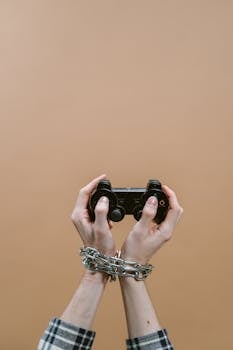What is technology addiction?

What is technology addiction?
In today’s fast-paced digital world, technology addiction has emerged as a pressing concern. It’s a situation where individuals become excessively reliant on devices and the internet, often leading to detrimental effects on their lives. Technology addiction is not just a buzzword; it’s a behavioral issue that many face, impacting their social lives, productivity, and overall well-being. Understanding this phenomenon is critical, especially as we navigate a society increasingly intertwined with technology.
Understanding Technology Addiction
Technology addiction, often referred to as internet addiction or digital addiction, encapsulates a range of compulsive behaviors related to technology use. This can include excessive time spent on social media, gaming, or even browsing the internet. Just like substance addiction, technology addiction can severely affect an individual’s daily functioning and interpersonal relationships.
What Constitutes Technology Addiction?
To diagnose technology addiction, certain criteria can be applied, drawing parallels with substance abuse disorders. According to sources like the American Psychiatric Association, this includes a persistent desire to use technology despite negative consequences, an inability to cut down on usage, and withdrawal symptoms when not using technology. In essence, if technology use starts to interfere with daily life similarly to how addiction to substances does, it signals a deeper issue.
Signs and Symptoms of Technology Addiction
Identifying technology addiction can be tricky, but several signs can indicate the problem. Common behaviors include:
- Increased Screen Time: Spending countless hours on devices, often sacrificing sleep or other activities to continue using technology.
- Neglecting Responsibilities: Prioritizing technology over work, school, or personal relationships can signal addiction.
- Withdrawal Symptoms: Experiencing anxiety, irritability, or mood swings when unable to access technology.
- Lying About Usage: Concealing the extent of time spent online or gaming from friends and family.
Recognizing these symptoms can help individuals assess their relationship with technology before it spirals out of control.
Impact of Technology Addiction
The repercussions of technology addiction can be profound, affecting both mental health and social dynamics.
Effects on Mental Health
Excessive technology use is linked to various mental health issues, including anxiety and depression. Studies suggest that individuals with higher screen time report feeling more isolated and less satisfied in their relationships. According to research published on PubMed, technology addiction can exacerbate feelings of loneliness and contribute to a decline in overall mental well-being. The constant barrage of online information can lead to overstimulation, making it harder for individuals to unwind or focus.
Impact on Productivity and Work-Life Balance
Technology addiction doesn’t just affect mental health; it can disrupt productivity and personal relationships. When screen time eats into work hours, it can lead to missed deadlines and decreased performance. This struggle is particularly evident in remote work settings, where the line between personal and professional life blurs. Many find themselves checking their phones during meetings or spending time on social media when they should be focused on tasks. This not only hampers productivity but can also strain personal relationships as individuals prioritize online interactions over face-to-face connections.
Combating Technology Addiction
Overcoming technology addiction requires conscious effort and dedication. Here are some practical tips to help regain control:
Setting Boundaries and Limits
Establishing clear boundaries around technology use is essential. This might include:
- Scheduled Screen Time: Designate specific times for technology use and stick to them.
- Tech-Free Zones: Create areas in your home, like the dining room or bedroom, that are free from devices.
- Usage Apps: Consider using apps that track and limit your screen time, making it easier to stay accountable.
These measures can help cultivate healthier technology consumption habits.
Finding Alternatives and Engaging in Offline Activities
Finding enjoyable activities outside of technology is vital for a balanced lifestyle. Explore hobbies that engage your mind and body, such as:
- Outdoor Activities: Hiking, biking, or simply walking in nature can reduce screen time and improve mood.
- Creative Pursuits: Take up painting, writing, or crafting to express yourself without the influence of screens.
- Social Engagement: Foster relationships through in-person interactions, whether it’s joining a club or participating in community events.
Engaging in offline activities not only reduces reliance on technology but can also enhance overall satisfaction and well-being.
Conclusion
Recognizing and addressing technology addiction is crucial for personal development and enhanced productivity. By understanding its psychological and behavioral aspects, we can better navigate our relationship with technology. Setting boundaries, finding alternatives, and engaging in offline activities can significantly improve our lives. If you sense technology addiction creeping into your daily routine, take proactive steps to regain balance. Remember, technology should serve us, not control us.